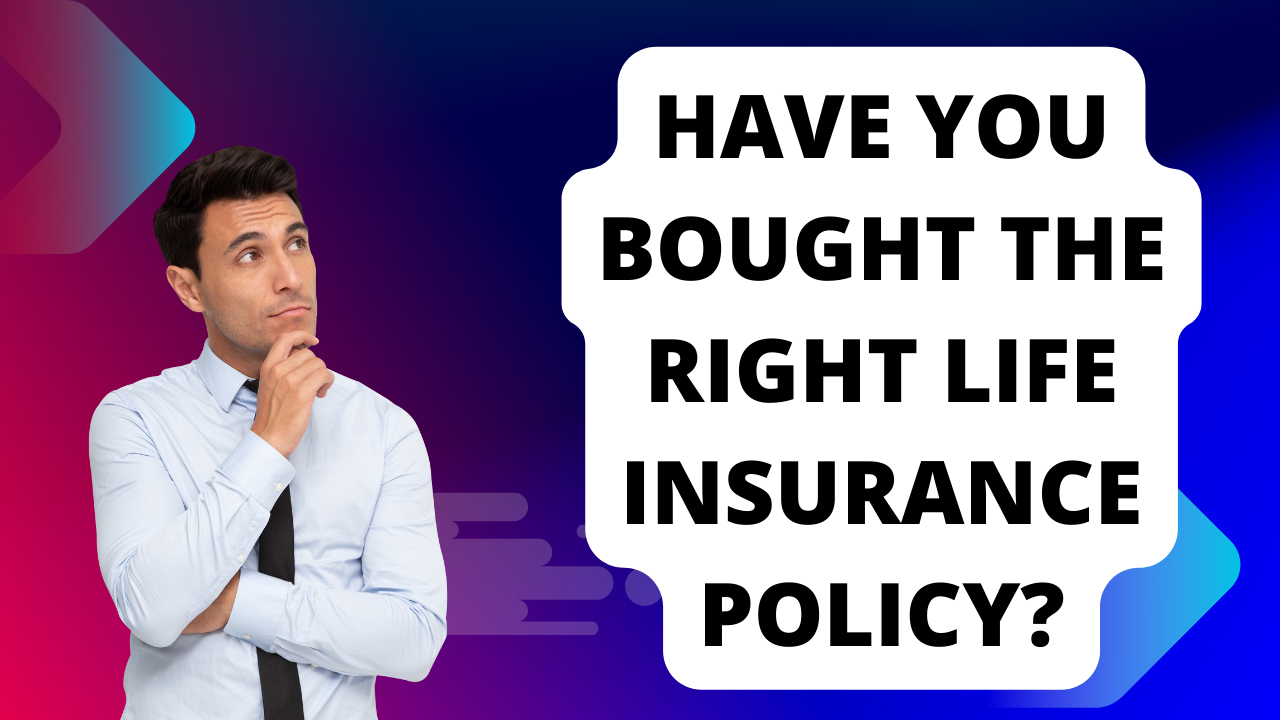Understanding Your Life Insurance Needs:
1. Assessing Financial Obligations and Family’s Future Needs:
- Evaluating Outstanding Debts, such as Mortgages, Loans, or Credit Card Balances.
- Estimating Future Expenses, such as Children’s Education or Wedding Costs.
- Considering Daily Living Expenses for Surviving Dependents.
2. Determining the Amount of Coverage Required:
- Calculating the Family’s Annual Income Needs in Case of the Policyholder’s Death.
- Identifying Additional Funds for Special Needs or Specific Goals.
- Taking Into Account Inflation and Future Cost of Living.
3. Assessing Existing Insurance Coverage:
- Reviewing Current Employer-Provided Life Insurance Benefits.
- Evaluating Other Insurance Policies (e.g., Group Life Insurance) in Place.
- Determining Whether Additional Coverage is Necessary.
Choosing the Right Type of Life Insurance:
1. Term Life Insurance vs. Permanent Life Insurance:
- Understanding Term Life Insurance: Temporary Coverage for a Specific Period (e.g., 10, 20, 30 years).
- Exploring Permanent Life Insurance: Lifelong Coverage with a Cash Value Component (e.g., Whole Life, Universal Life).
2. Considering Your Budget and Long-Term Goals:
- Analyzing Premium Costs for Different Types of Life Insurance.
- Aligning Life Insurance Choice with Long-Term Financial Objectives.
- Balancing Coverage Needs with Affordability.
3. Evaluating the Purpose of the Policy:
- Choosing Term Life Insurance for Temporary Needs (e.g., Covering Mortgage, Income Replacement).
- Opting for Permanent Life Insurance to Build Cash Value and Leave a Legacy.
- Combining Policies for Diverse Protection and Financial Goals.
4. Assessing Risk Tolerance:
- Understanding the Investment Component of Permanent Life Insurance.
- Weighing the Benefits of Guaranteed Death Benefit in Permanent Policies.
- Considering the Flexibility and Adaptability of Term Insurance.
5. Policy Conversion Options:
- Inquiring About Convertible Term Life Insurance to Permanent Coverage.
- Understanding Conversion Terms and Restrictions.
6. Considering Health and Age Factors:
- Evaluating Health Condition and Impact on Premium Rates.
- Assessing Age and How It Affects Life Insurance Eligibility and Costs.
Understanding the Claims Process:
1. Familiarizing Yourself with the Claim Filing Procedure:
- Contacting the Insurance Company or Agent: Notify the insurer of the policyholder’s death, providing necessary details.
- Obtaining Claim Forms: Request the required claim forms from the insurer or download them from their website.
2. Gathering Required Documentation:
- Death Certificate: Obtain an official death certificate from the relevant authorities.
- Policy Documents: Provide the original life insurance policy and any related documents.
3. Completing the Claim Forms:
- Fill out the claim forms accurately and thoroughly, ensuring all required information is provided.
4. Submission of Claims:
- Submit the completed claim forms and supporting documents to the insurer through the appropriate channels (online, email, or mail).
5. Claim Processing and Review:
- The insurer will review the submitted documents and verify the claim’s validity.
- If necessary, the insurer may conduct an investigation to validate the claim.
6. Beneficiary Verification:
- The insurer will verify the beneficiary’s identity and ensure they are the rightful recipient of the death benefit.
Securing Your Family’s Financial Future:
1. Communicating with Beneficiaries:
- Inform your beneficiaries about the existence and details of the life insurance policy.
- Keep beneficiaries updated about any changes or updates to the policy.
2. Organizing Important Documents:
- Maintain all insurance-related documents in a secure and accessible location.
- Ensure beneficiaries know where to find these documents in the event of your passing.
3. Reviewing and Updating the Policy:
- Periodically review your life insurance policy to ensure it aligns with your current needs and circumstances.
- Update beneficiaries and coverage amounts as life events occur (e.g., marriage, birth of children).
4. Creating a Comprehensive Estate Plan:
- Consider creating a comprehensive estate plan that includes a will, living trust, and other legal documents to protect your family’s assets and interests.
5. Addressing Outstanding Debts:
- Use life insurance proceeds to settle outstanding debts, such as mortgages or loans, to relieve financial burden on your loved ones.
By understanding the claims process and taking steps to secure your family’s financial future, you can ensure that the life insurance policy serves as a valuable tool in providing financial stability and support to your loved ones after your passing. Regularly reviewing and updating your policy, along with seeking professional advice, can help you make informed decisions to safeguard your family’s well-being.
Evaluating Policy Duration and Coverage Period:
1. Determining Your Coverage Needs:
- Assessing Financial Obligations: Evaluate the duration of outstanding debts, such as mortgages or loans, and ensure the coverage period aligns with their repayment timeline.
- Considering Dependents: Take into account the age and financial needs of dependents to ensure coverage is available during critical years.
2. Matching Coverage Period with Life Events:
- Planning for Life Milestones: Choose a policy duration that encompasses significant life events, such as the education of children or retirement.
- Flexible Coverage: Opt for a policy with renewal options or conversion features to extend coverage beyond the initial term.
3. Balancing Premium Costs and Coverage Duration:
- Affordability: Select a policy duration that fits within your budget without compromising on essential coverage.
- Long-Term Planning: Consider combining term and permanent life insurance for comprehensive and cost-effective coverage.
4. Consideration of Health and Insurability:
- Health Changes: If you anticipate a decline in health, opt for a longer-term policy to lock in coverage at a more favorable rate.
- Reevaluating Coverage: Regularly reassess your coverage needs as your health and financial situation may change over time.
Examining Policy Riders and Add-Ons:
1. Critical Illness Rider:
- Understanding Coverage: Evaluate the conditions covered under the critical illness rider, such as heart attack, cancer, or stroke.
- Impact on Death Benefit: Determine how the rider affects the death benefit, as some policies may reduce the death benefit if a critical illness claim is paid.
2. Disability Income Rider:
- Examining Coverage Terms: Understand the circumstances under which the disability income rider provides benefits in case of disability.
- Integration with Other Policies: Assess how the disability income rider works with any separate disability insurance policies you may have.
3. Accidental Death Benefit Rider:
- Coverage Specifics: Review the conditions under which the accidental death benefit rider pays out and how it supplements the regular death benefit.
- Cost-Benefit Analysis: Weigh the cost of the rider against the potential benefits it provides to determine its value.
4. Waiver of Premium Rider:
- Exploring Qualification Criteria: Understand the conditions under which the waiver of premium rider activates and how it waives future premium payments in case of disability.
- Impact on Premiums: Assess the cost of adding the rider and its long-term impact on the policy’s affordability.
5. Conversion Option:
- Converting to Permanent Coverage: Evaluate the conversion feature if you wish to switch to permanent life insurance without the need for a new medical exam.
- Conversion Period: Be aware of the conversion window, as it may have a specific time frame during which the option is available.
6. Long-Term Care Rider:
- Understanding Coverage: Determine the types of long-term care expenses covered by the rider and the conditions for accessing the benefits.
- Long-Term Care Needs: Assess the necessity of the rider based on your potential long-term care requirements.
FAQs (Frequently Asked Questions) about Life Insurance Policy Evaluation:
1. Can I change the duration of my life insurance policy after purchase?
In most cases, the duration of term life insurance policies is fixed once the policy is purchased. However, some policies may offer renewal or conversion options that allow for extensions or changes to permanent coverage.
2. What happens if I outlive my term life insurance policy?
If you outlive your term life insurance policy, the coverage will expire, and no death benefit will be paid out. However, some policies may offer a return of premium option, providing a refund of paid premiums at the end of the policy term.
3. Can I add or remove riders from my life insurance policy later on?
Depending on the policy, you may have the flexibility to add or remove certain riders during the policy term. However, it’s essential to check with your insurer to understand their specific rules and guidelines for rider modifications.
4. Is a medical exam required when adding a rider to my policy?
Adding certain riders may require medical underwriting, especially if the rider involves additional risk coverage, such as critical illness or disability income. The insurer may request medical information to assess eligibility and determine the cost of the rider.
Conclusion:
Evaluating your life insurance policy involves carefully assessing your coverage needs, selecting the appropriate policy duration, and considering the benefits of adding riders or add-ons. Understanding your financial obligations, family’s future needs, and life events is crucial in determining the right amount of coverage and policy duration.
Read More:
- Post Office Savings Account: Benefits and How to Open an Account
- 7 Simple Ways to Start Saving for a Bright Future
- How can I grow my savings fast?
- Saving Account: Types, Interest rates, and eligibility criteria




